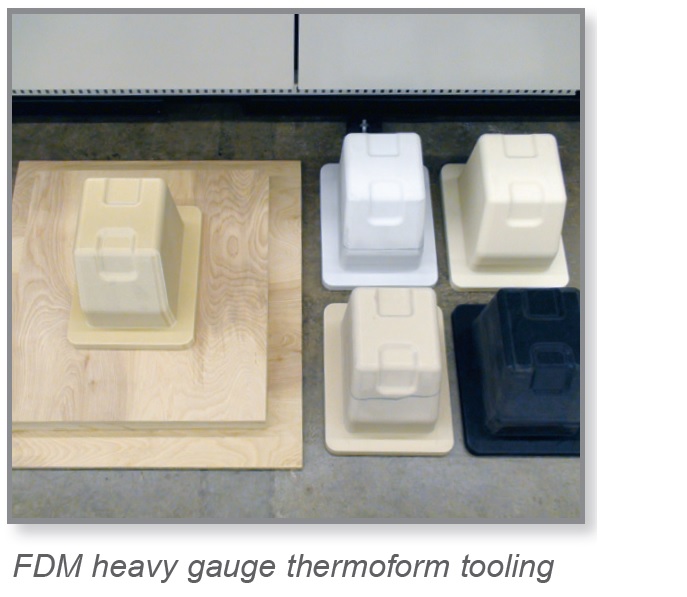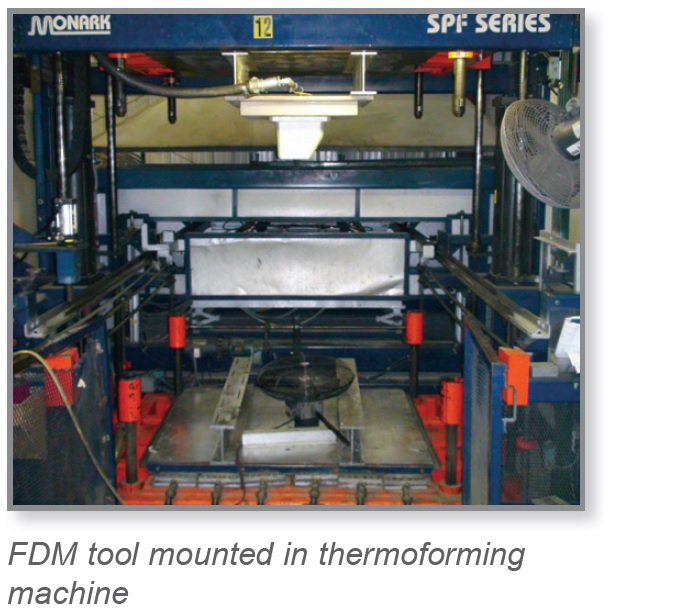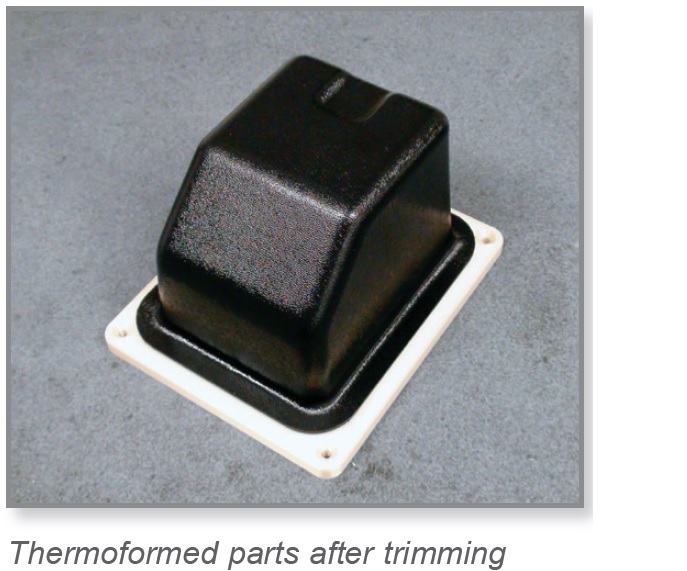Thermoforming is a process that utilizes a heated thermoplastic sheet that is formed and then trimmed to create the final product. In order to do this, the plastic sheet or film is heated to a temperature just below the material’s melting point, which makes it pliable enough to follow features in the mold. The sheet is pressed down against the male plug, using either vacuum pressure (pulled through bottom faces of the tool) or a core tool. The material is held in place until it is cooled and rigid enough to hold its form. Then the part is removed and excess material is trimmed. Thermoforming is most commonly used in the packing industries, but can also be used for much larger applications, such as large trays and interior aircraft parts.
Advantages
Thermoforming also has the benefit of being able to form thin wall thicknesses. A typical thermoformed part can have walls as thin as 0.015 inches and as thick as 0.150 inches (0.38 mm to 3.81 mm). Thermoformed parts can achieve surface finishes between 60-120 micro-inches, and even as low as 16 micro-inches given the correct geometry. Almost any thermoplastic can be used to create thermoformed parts, but the most common materials are acrylic (PMMA), ABS, polypropylene, and polyethylene.
Unlike other molding processes, thermoforming uses a relatively low level of pressure, which greatly reduces molding stresses. This allows the tooling to be constructed more quickly and less expensively. Thermoforming molds are most commonly made of aluminum, but since the process requires such low pressures, 3D printed molds can also be used. While an FDM or PolyJet [LINK] mold will not last as long as aluminum, it can be considered a viable option for prototyping and short-runmanufacturing. A 3D printed thermoforming tool life can last up to 1,000 parts, depending on the part material. An aluminum tool can feasibly produce up to 100,000 parts, depending on the material and if the tool is properly maintained.
Considerations
Thermoforming is a process that should be considered if you’re producing very large parts, particularly with thin wall thicknesses. If the sheet feeding is automated, it can achieve very high production rates at a very low part cost. A thermoforming tool can be created very quickly and at a relatively low cost, particularly if it’s possible to utilize a 3D printed tool. However, thermoforming is limited to fairly simple part geometries, since the thermoplastic has to form over every feature. The minimum feature size depends on the material thickness. Thermoformed parts also require minimum draft angles of 2 degrees and up to 7 degrees for nesting parts.
In Conclusion
Thermoforming is able to produce thin simple thermoplastic parts very quickly and at a very low cost. This makes it ideal for high volume prototyping and low volume production. Pongratz Engineering can help you explore the options and choose the technology that best suits your project and needs. Please visit our website at www.pongratz-engineering.com or call us at 612-384-0122.



